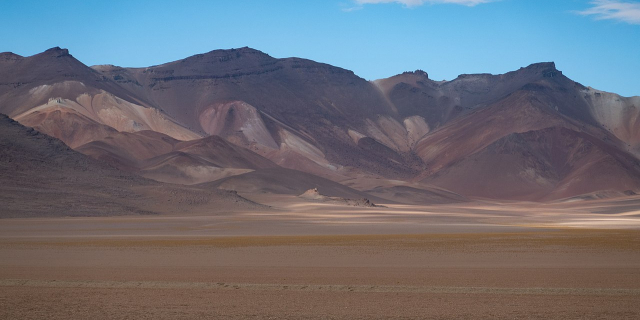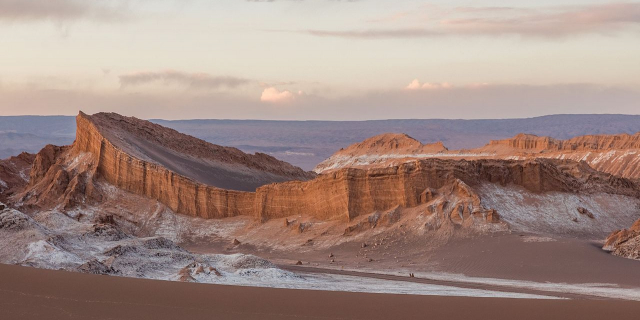Licancabur (Spanish pronunciation: [likaŋkaˈβuɾ]) is a stratovolcano on the border between Bolivia and Chile, south of the Sairecabur volcano and west of Juriques. Part of the Andean Central Volcanic Zone, it has a prominent, 5,916-metre (19,409 ft)-high cone. A 400-metre (1,300 ft) summit crater containing Licancabur Lake, a crater lake which is among the highest lakes in the world, caps the volcano. Three stages of lava flows emanate from the edifice.
Licancabur formed atop of Pleistocene ignimbrites and has been active during the Holocene, after the ice ages. Although no historic eruptions of the volcano are known, lava flows extending into Laguna Verde have been dated to 13,240 ± 100 BP. The volcano has primarily erupted andesite, with small amounts of dacite and basaltic andesite.
Its climate is cold, dry and very sunny, with high levels of ultraviolet radiation. Licancabur is not...Read more
Licancabur (Spanish pronunciation: [likaŋkaˈβuɾ]) is a stratovolcano on the border between Bolivia and Chile, south of the Sairecabur volcano and west of Juriques. Part of the Andean Central Volcanic Zone, it has a prominent, 5,916-metre (19,409 ft)-high cone. A 400-metre (1,300 ft) summit crater containing Licancabur Lake, a crater lake which is among the highest lakes in the world, caps the volcano. Three stages of lava flows emanate from the edifice.
Licancabur formed atop of Pleistocene ignimbrites and has been active during the Holocene, after the ice ages. Although no historic eruptions of the volcano are known, lava flows extending into Laguna Verde have been dated to 13,240 ± 100 BP. The volcano has primarily erupted andesite, with small amounts of dacite and basaltic andesite.
Its climate is cold, dry and very sunny, with high levels of ultraviolet radiation. Licancabur is not covered by glaciers. Cushion plants and shrubs form the vegetation lower on its slopes. Chinchillas were formerly hunted on the volcano.
Licancabur is considered a holy mountain by the Atacameno people, which consider it a relative of Cerro Quimal mountain in northern Chile. Archeological sites have been found on its slopes and in the summit crater, which was possibly a prehistoric watchtower.





























Add new comment